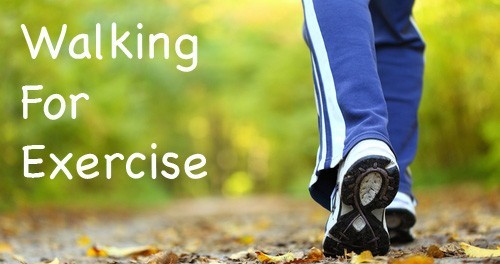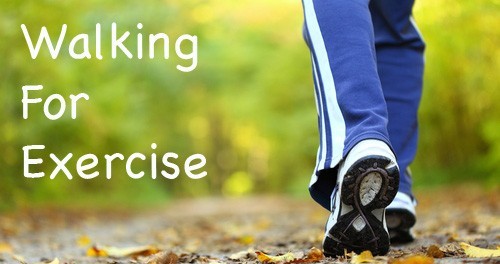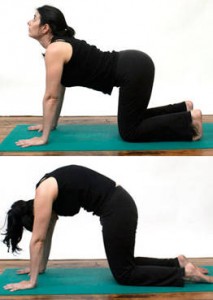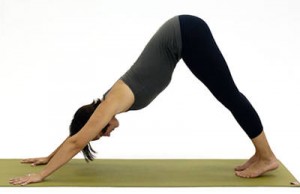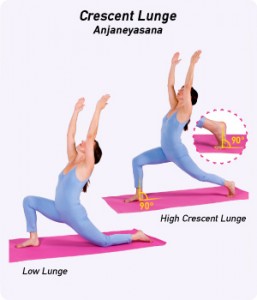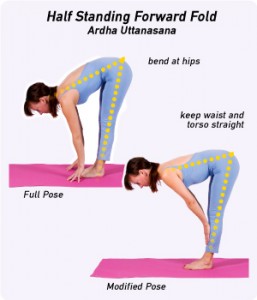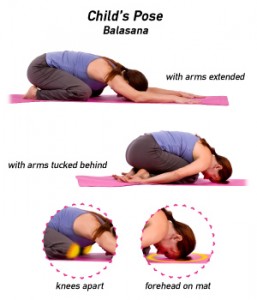Walk Talk Series
Day 28 – Daily Yoga Stretches and Cross-Training
Review your goals
You’ve been with the program for four weeks. Review your goals. Have you reached any milestones? Do you want to revise your goals? Are you proud of your accomplishment and commitment to your goals?
Today’s Walk Rest Day
Daily Yoga Stretches
These Yoga stretches are a great addition to your daily exercise routine. This 10- to 15-minute sequence stretches the back, hamstrings, and hips, problem areas for many people. You can add it as a warm up when you first get out of bed in the morning, after your walk or other daily exercise or even a way to calm and relax before bedtime.
Pelvic tilts are an exercise comprised of very subtle movements that strengthen the support muscles around the low back, particularly the abdominals. They are a good preliminary exercise for those seeking low back pain relief, and they feel great because they give your back a little massage. They can be done lying on the floor or standing with the back to a wall. The standing version is a bit more difficult, but it is a good option for pregnant women who are not comfortable on their backs.
- 1.Lie on your back with the knees bent and the soles of the feet on the floor. This is your neutral position, with the natural curve of the lumbar spine causing the low back to be slightly elevated from the floor.
- 2. On an exhale, gently rock your hips towards your face. Your butt will not actually leave the floor, but you will feel your low back press into the floor. You are essentially taking the curve out of the low back.
- Think of the pelvis as a bowl of water. When you do the pelvic tilt, the water would be spilling towards your belly.
- 3. After a few seconds, inhale and return to your neutral position.
- 4. Repeat this movement 5 to 10 times.
- The animation above illustrates the subtlety of the movement.
Continue warming up the back with 5 to 10 Cat – Cow Stretches. The movement of the pelvis in a Cat – Cow is similar to a pelvic tilt, but the Cat – Cow stretches that movement along the entire spine.
- Start on your hands and knees with your wrists directly under your shoulders, and your knees directly under your hips. Point your fingertips to the top of your mat. Place your shins and knees hip-width apart. Center your head in a neutral position and soften your gaze downward.
- Begin by moving into Cow Pose: Inhale as you drop your belly towards the mat. Lift your chin and chest, and gaze up toward the ceiling.
- Broaden across your shoulder blades and draw your shoulders away from your ears.
- Next, move into Cat Pose: As you exhale, draw your belly to your spine and round your back toward the ceiling. The pose should look like a cat stretching its back.
- Release the crown of your head toward the floor, but don’t force your chin to your chest.
- Inhale, coming back into Cow Pose, and then exhale as you return to Cat Pose.
- Repeat 5-10 times, and then rest by sitting back on your heels with your torso upright.
Downward-Facing Dog is one of the most well-known yoga poses. It strengthens and stretches the whole body!
- Begin on your hands and knees. Align your wrists directly under your shoulders and your knees directly under your hips. The fold of your wrists should be parallel with the top edge of your mat. Point your middle fingers directly to the top edge of your mat.
- Stretch your elbows and relax your upper back.
- Spread your fingers wide and press firmly through your palms and knuckles. Distribute your weight evenly across your hands.
- Exhale as you tuck your toes and lift your knees off the floor. Reach your pelvis up toward the ceiling, then draw your sit bones toward the wall behind you. Gently begin to straighten your legs, but do not lock your knees. Bring your body into the shape of an “A.” Imagine your hips and thighs being pulled backwards from the top of your thighs. Do not walk your feet closer to your hands — keep the extension of your whole body.
- Press the floor away from you as you lift through your pelvis. As you lengthen your spine, lift your sit bones up toward the ceiling. Now press down equally through your heels and the palms of your hands.
- Firm the outer muscles of your arms and press your index fingers into the floor. Lift from the inner muscles of your arms to the top of both shoulders. Draw your shoulder blades into your upper back ribs and toward your tailbone. Broaden across your collarbones.
- Rotate your arms externally so your elbow creases face your thumbs.
- Draw your chest toward your thighs as you continue to press the mat away from you, lengthening and decompressing your spine.
- Engage your quadriceps. Rotate your thighs inward as you continue to lift your sit bones high. Sink your heels toward the floor.
- Align your ears with your upper arms. Relax your head, but do not let it dangle. Gaze between your legs or toward your navel.
- Hold for 5-100 breaths.
- To release, exhale as you gently bend your knees and come back to your hands and knees.
The lunge is a dynamic standing yoga pose that stretches and strengthens the whole body!
- 1. Begin in Downward-Facing Dog . With an exhalation, step your right foot forward between your hands.
- 2. Bend your front knee to 90 degrees, aligning your knee directly over the heel of your front foot. Your feet should be hip-width apart with both feet facing forward, and your front shin should be perpendicular to the floor.
- 3. Come on to the ball of your back foot, lifting your heel and drawing it forward so it aligns directly over your back toes.
- 4. Lift your back leg strongly, drawing your knee and quadriceps up toward the ceiling. Straighten your back leg completely.
- 5. With your back leg strong and active, gently draw your left hip forward as you press your right hip back, squaring your hips so they are parallel to the top edge of your mat.
- Modification– If it is too difficult to keep your back leg raised while keeping your toes on the mat, lower your knee to the floor and slide your leg back a few inches. Un-tuck your back toes and rest the top of your back foot on the floor.
- 6. Inhale as you raise your torso to an upright position. Sweep your arms overhead. Draw your tailbone toward the floor. Spin your pinky fingers toward each other, opening your arms so your palms face each other. Gently tilt your head and gaze up at a space between your thumbs.
- 7. Make sure your front shin stays vertical. Widen your stance as needed to make sure that your knee does not move forward past your ankle.
- 8. Tuck your tailbone under and engage the muscles of your abdomen to help stabilize your core.
- 9. Extend up through the crown of your head, lengthening your upper body. Draw your shoulder blades firmly into your upper back.
- 10. Draw your lower front ribs in and down toward your belly — do not let them poke forward.
- 11. Hold for up to one minute. Release your hands back to the mat and step back into Downward Dog.
- 12. Repeat on the other side.
Half Standing Forward Fold (Ardha Uttanasana) strengthens the back and stretches the hamstrings.
- Begin in Standing Forward Fold (Uttanasana), with your hands or fingertips on the floor at the side of each foot. You can also rest your hands on your shins, or press your palms into yoga blocks at the sides of your feet.
- Inhale as you raise the front of your torso away from your thighs, straightening your elbows.
- Lift your collarbones and sternum away from the floor. Reach the crown of your head forward and your tailbone behind you. You can bend your knees slightly to help straighten the torso and spine.
- Press your fingertips or palms into the floor, to help lift and straighten your torso.
- Lift your head slightly and gaze forward without compressing the neck. Your torso should be straight. If your back rounds, bend your knees or place your hands higher until your spine is straight.
- Engage your quadriceps (the front thigh muscles) and draw them up toward the ceiling. Do not lock your knees; keep them slightly bent.
- Bring your weight to the balls of your feet. Keep your hips aligned over your ankles.
- Slightly lift and lengthen your torso with each inhalation.
- Hold the pose for up to one minute. Exhale as you release into Uttanasana. Repeat 5-10 times. Those practicing Sun Salutations should move directly from Ardha Uttanasana into Low Lunge, Plank, or Chaturanga.
Child’s Pose helps to stretch the hips, thighs, and ankles while reducing stress and fatigue. It gently relaxes the muscles on the front of the body while softly and passively stretching the muscles of the back torso.
- Begin on your hands and knees. Center your breath, and begin to let your thoughts slow down. Turn your awareness inward.
- Spread your knees wide apart while keeping your big toes touching. Rest your buttocks on your heels.
- Those with very tight hips can keep their knees and thighs together.
- Sit up straight and lengthen your spine up through the crown of your head.
- On an exhalation, bow forward, draping your torso between your thighs. Your heart and chest should rest between or on top of your thighs. Allow your forehead to come to the floor.
- Keep your arms long and extended, palms facing down. Press back slightly with your hands to keep your buttocks in contact with your heels. Lengthen from your hips to your armpits, and then extend even further through your fingertips.
- For deeper relaxation, bring your arms back to rest alongside your thighs with your palms facing up. Completely relax your elbows.
- Let your upper back broaden. Soften and relax your lower back. Allow all tension in your shoulders, arms, and neck to drain away.
- Keep your gaze drawn inward with your eyes closed.
- Hold for up to a minute or longer, breathing softly.
- To release the pose, gently use your hands to walk your torso upright to sit back on your heels.
Cross-Training: Bicycling
Using a bicycle can tone those lower body muscles that are not toned much by regular walking, especially the quadriceps – the muscles at the front of the thigh. In some ways cycling works the opposite muscle groups as walking, so give your muscles a treat once a week by cycling for 20-30 minutes.

